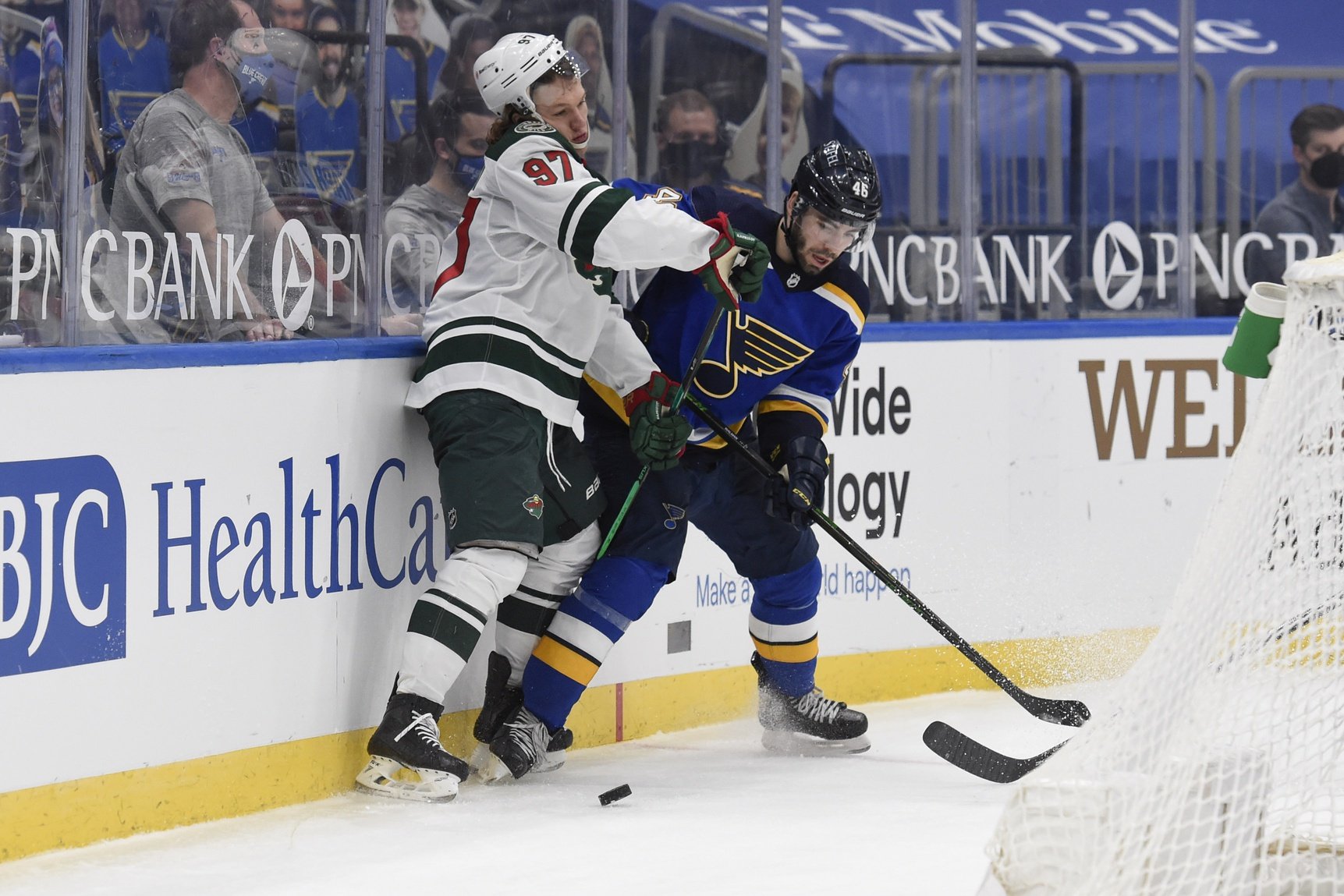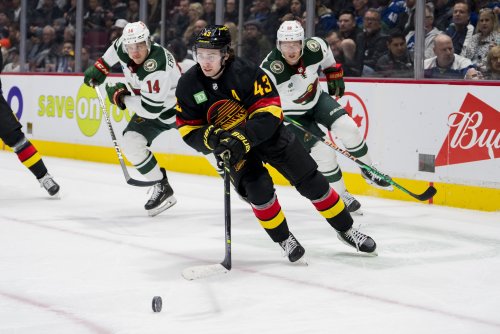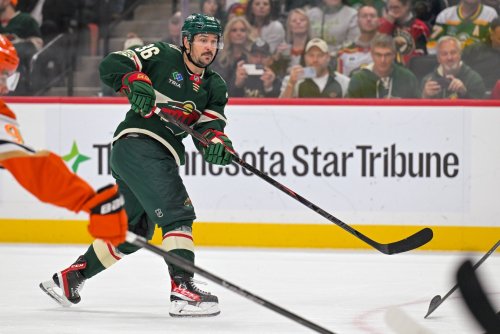
The more things change, the more things stay the same for the Minnesota Wild’s power play. With star power in Kirill Kaprizov and Kevin Fiala, how can it continue to be this inept? “The Wild starting the year on a cold streak on the man advantage” has now surpassed “Death” and is sneaking up on “Taxes” for the No. 1 slot in the Inevitability Power Rankings.
Ideally, Kevin Fiala’s power play goal on opening night against the Anaheim Ducks should’ve been a breakthrough moment. Instead, they continue to be mired in the same mediocrity they were stuck in last season. It’s odd how Minnesota can absolutely own the play, dominate the offensive zone, and create numerous scoring chances routinely at 5-on-5 play, yet often can’t muster a single shot through multiple power plays in a given game.
Last season the Wild discovered how to utilize puck movement throughout the offensive zone at 5-on-5, including the high-cycle, to switch and create mismatches and confusion among the opposition. This eventually led to the Wild outnumbering the defense for a scoring chance, and goals followed. On the power play, this motion with and without the puck came to a screeching halt. Players relied on moving the puck with passing, not skating, to get penalty killers out of position. When teams play aggressively against the Wild’s passive perimeter play, Minnesota gets beat. The aggressiveness is possible because it’s easy to identify where shots will be coming from.
These trends from last season are bleeding over into this one. In the second period of Saturday night’s loss to the Colorado Avalanche, Ryan Hartman's power-play goal snapped an 0-for-14 dry spell on the man advantage. Minnesota will take it, but it shouldn’t erase the glaring issue: That their first power play unit (not to mention the players that populate it) is badly in need of a goal right now.
We’ve discussed the reasons why their second unit isn’t a prototypical power-play unit. All the firepower is on the first unit, leaving mainly third-line guys to pitch in. It worked on Saturday night, but teams can’t count on their second unit scoring big, timely goals every night.
However, their style of play is exactly how the top unit should be going about their business. Watch how the puck moves from high to low as Matt Dumba passes to Marcus Foligno down near the goal line. This opens up so many options for Foligno. He can either:
Turn and take the puck to the front of the net himself
Pass across the slot to a wide open Nick Bjugstad in the opposite circle
Dish to an open Hartman in the soft spot of the penalty kill box
Restart the play with a pass back to Dumba
Foligno elects option three, and Hartman makes a great shot over the blocker of Darcy Kuemper.
The play to put the puck behind the net does another thing to make a goal possible. Watch the play again, and this time, look at each of the Avalanche penalty killers. Each one has their eyes focused on Foligno, and most importantly, off every other Wild player on the ice. They cannot possibly track all the movements of each player.
What if the Wild got the Avs penalty killers turning their backs on Fiala or Kaprizov? What if they couldn’t track Jared Spurgeon pinching in? Expected goals gave Hartman’s shot about a 9% chance of going in, which would be higher if the metric accounted for the cross-crease pass. What if Kaprizov or Fiala were taking high-danger shots like that instead of snap shots from the outside? It’d become a better bet that the power play isn’t going to run into many more 0-for-14 goal droughts.
Minnesota’s first unit has done a good job of getting the puck onto the most dangerous shooters’ hands. Kaprizov and especially Fiala are firing the puck the majority of the time. That’s all great. But look at this map from Hockey Viz. You can see that the bulk of these shots are coming from the outside.
Additionally, there isn’t much passing to get penalty killers out of position before taking those shots. This means Fiala and Kaprizov have to shoot the puck from further out, but there are more layers of defense in the way. The odds of them getting through plummets.
[caption id=attachment_108417" align="aligncenter" width="532] Courtesy of HockeyViz.com[/caption]
Courtesy of HockeyViz.com[/caption]
The four forwards on the Wild’s power play — and Kaprizov in particular — have the skill and small-space quickness that can help them run the power play from behind the net. From there, Kaprizov will garner all of the attention, freeing up the rest of the power play to roam free and unchecked. And when shots do come, there will be less traffic for the puck to travel through, resulting in more goals.
The Wild have the right people on the ice during the man advantage. They even give that unit enough ice time to make things happen. They just don’t have the right strategy to put each player in the best place to score. Taking the power play behind the net can make a world of difference and pull the power play out of the depths, and might even get the big-money scorers finding the net again.
Think you could write a story like this? Hockey Wilderness wants you to develop your voice, find an audience, and we'll pay you to do it. Just fill out this form.








Recommended Comments
There are no comments to display.
Join the conversation
You can post now and register later. If you have an account, sign in now to post with your account.
Note: Your post will require moderator approval before it will be visible.